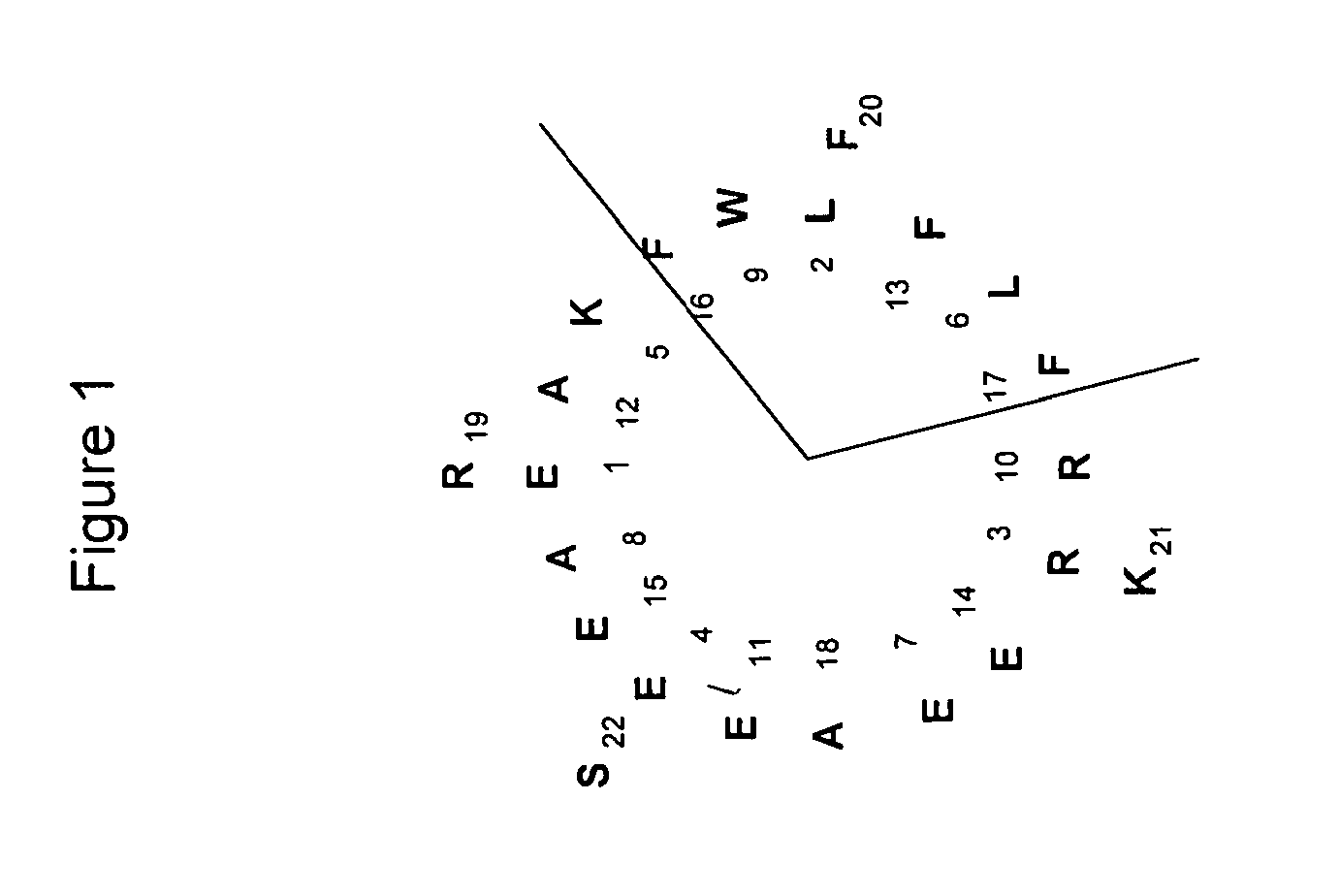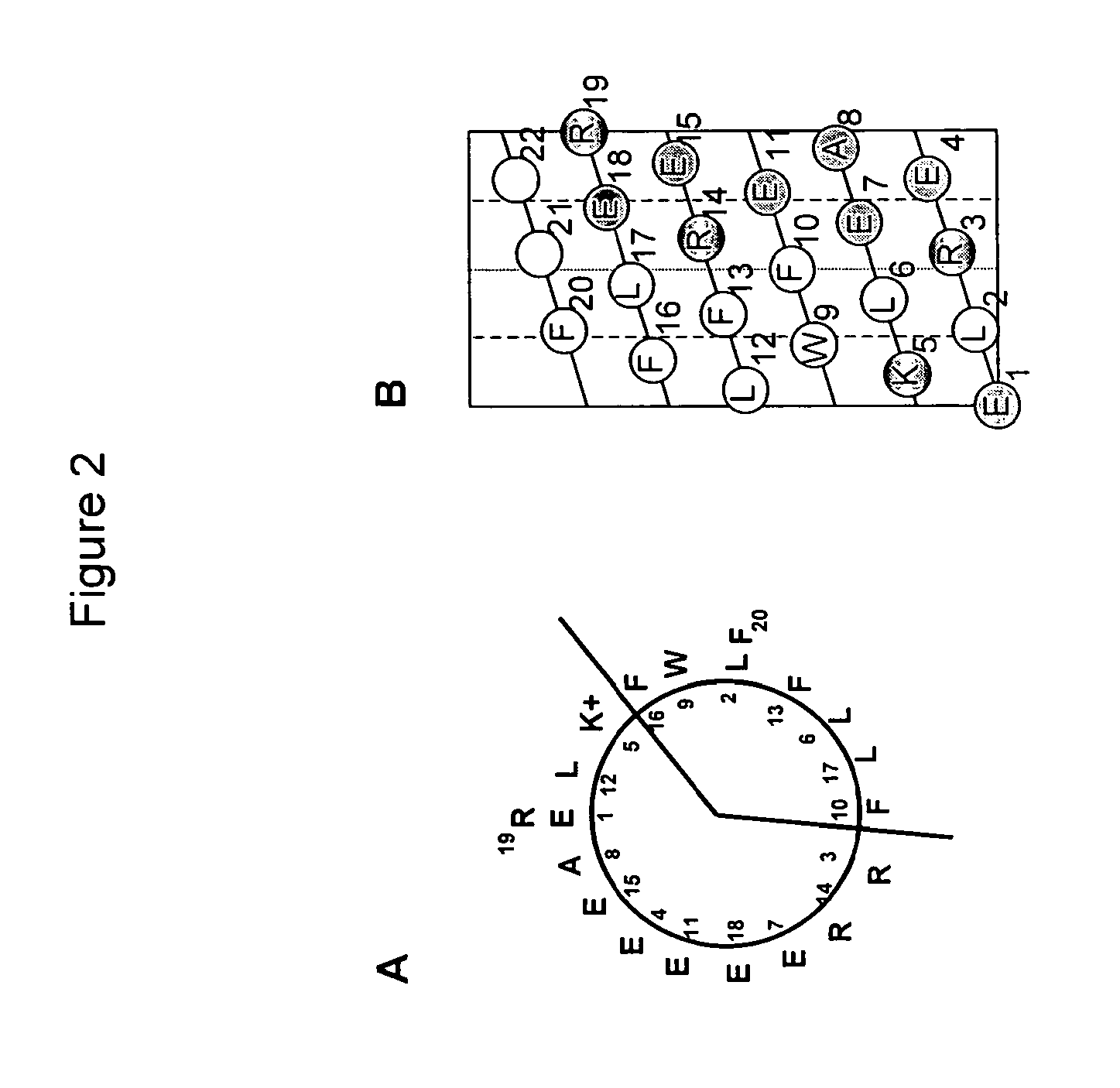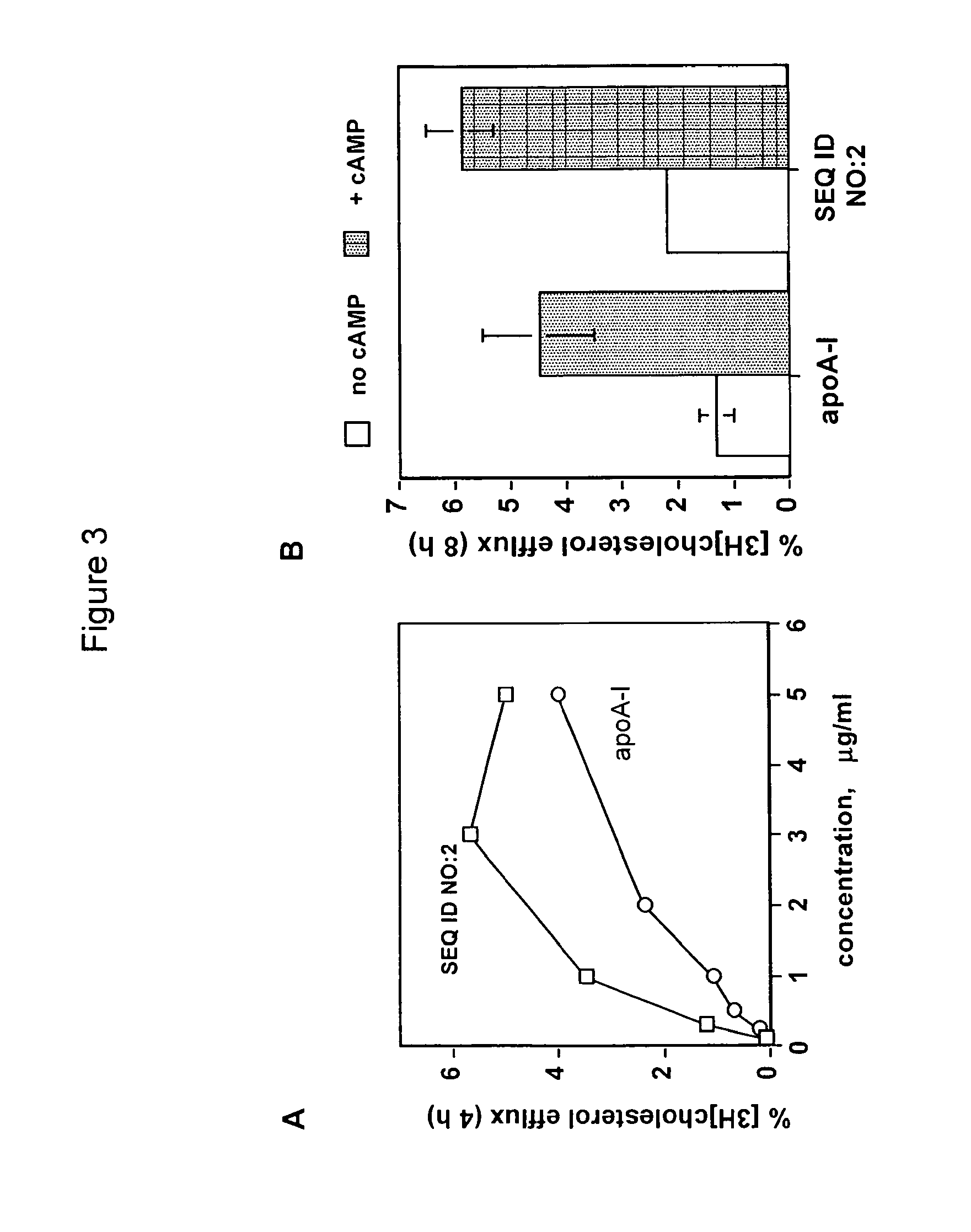Peptide mediators of cholesterol efflux
a peptide and efflux technology, applied in the direction of peptide/protein ingredients, peptide sources, metabolic disorders, etc., can solve the problems of huge unmet medical needs, and achieve the effects of stimulating cholesterol efflux, high selectivity, and cellular cholesterol efflux
- Summary
- Abstract
- Description
- Claims
- Application Information
AI Technical Summary
Benefits of technology
Problems solved by technology
Method used
Image
Examples
example 1
Cholesterol Efflux Activity of 22-Mer Peptides
[0288]The peptides are listed in groups reflecting changes in composition made to increase efficiency in stimulating ABCA1 cholesterol efflux. The sequences are identified by numbers that correspond to synthesis lot numbers.
[0289]257-11 corresponds to a 22-mer peptide successfully engineered with biological activity. The amino acid sequence of peptide N257-11 is ELREKLEAWREAFEEFFARFKS (SEQ ID NO:34) (FIG. 1, which shows a helical wheel diagram of the peptide). N257-11 stimulated ABCA1 cholesterol efflux with generally high capacity, although high concentrations were required for activity and thus the peptide displayed weak efflux efficiency.
Peptide Series #: N257-11,
22-mer peptide with ABCA1 cholesterol efflux activity
[0290]
ELREKLEAWREAFEEFFARFKSSEQ ID NO: 34
[0291]
8 hour efflux data (J774 macrophages ±cAMP to upregulate ABCA1)% cholesterol efflux (8 hours)No cAMP0.91 ± 0.1Peptide stimulates ABCA1-cholesterol efflux+ cAMP6.99 ± 1.4Km appr...
example 2
Cholesterol Efflux Activity of 20-mer, 21-mer, and 22-mer Peptides
[0292]Peptides comprising series N356 were designed with amino acid substitutions to increase the cholesterol efflux efficiency of the parent N257-11 peptide. One substitution (R10→F, N356-1 peptide) was intended to expand the non-polar surface to 140 degrees; this disrupted one of the putative salt-bridges in the parent peptide. The changes produced peptides that were more potent than N257-11 in stimulating cholesterol efflux, although the concentration dependence curves displayed a threshold-type response uncharacteristic of native proteins.
[0293]Peptides in series N965 were based on a composite design of series N257 and N356 and were engineered to maintain salt-bridge configurations, a broad non-polar surface and key topographical aspects of acidic residues on the polar surface. Subsequent engineering (N1154 series) lead to the surprising finding that a relatively few choices of amino acids can be used to artificia...
example 3
[0305]The primary amino acid sequence and projected α-helical structure of potent ABCA1 cholesterol efflux peptide SEQ ID NO:2 (20-mer) (FIG. 2). Panel A shows α helical wheel diagram showing amphipathic nature of the peptide. Panel B shows α helical net diagram showing the peptide cut down the long axis of the polar surface and flattened. Shaded circles indicate acidic amino acids and partially shaded circles cationic residues. Numbers in both panels refer to the primary sequence of amino acids.
PUM
| Property | Measurement | Unit |
|---|---|---|
| half life | aaaaa | aaaaa |
| concentrations | aaaaa | aaaaa |
| concentrations | aaaaa | aaaaa |
Abstract
Description
Claims
Application Information
 Login to View More
Login to View More - R&D
- Intellectual Property
- Life Sciences
- Materials
- Tech Scout
- Unparalleled Data Quality
- Higher Quality Content
- 60% Fewer Hallucinations
Browse by: Latest US Patents, China's latest patents, Technical Efficacy Thesaurus, Application Domain, Technology Topic, Popular Technical Reports.
© 2025 PatSnap. All rights reserved.Legal|Privacy policy|Modern Slavery Act Transparency Statement|Sitemap|About US| Contact US: help@patsnap.com



